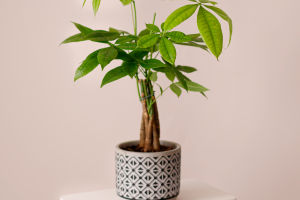Multifaceted Marvels
Cypress trees, known for their towering height and elegant appearance, have been revered in various cultures for centuries.
The branches of these majestic trees are more than just visually appealing; they hold significant functions and effects that contribute to both the natural ecosystem and human well-being.
Let's explore the multifaceted roles of cypress branches, delving into their ecological importance, medicinal benefits, and cultural significance.
Ecological Importance
Cypress trees play a crucial role in maintaining ecological balance. Their branches, densely packed with needle-like leaves, provide essential habitat and food for various wildlife species. Birds, such as the bald eagle and osprey, often build their nests in the sturdy branches of cypress trees, benefiting from the protection and elevation they offer. The dense foliage also provides shelter for smaller animals, including squirrels and insects, creating a micro-ecosystem within the tree itself.
Furthermore, cypress branches contribute to soil stabilization and water management. In swampy areas, cypress trees are particularly valuable. Their extensive root systems and branches help prevent soil erosion by holding the ground firmly in place. This stabilization is crucial in wetlands, where loose soil can easily be washed away by water currents. Additionally, the branches and leaves of cypress trees play a role in transpiration, a process that helps regulate water levels in the surrounding environment. By absorbing and releasing water, cypress trees maintain a balanced hydrological cycle, supporting the overall health of wetland ecosystems.
Medicinal Benefits
The branches of cypress trees have been used in traditional medicine for centuries. Cypress essential oil, derived from the needles and twigs, is known for its therapeutic properties. This oil is often used in aromatherapy to promote relaxation and relieve stress. Its soothing aroma has a calming effect on the mind, making it a popular choice for individuals seeking mental clarity and tranquility.
In addition to its aromatherapeutic benefits, cypress oil has antimicrobial and anti-inflammatory properties. It is commonly used in natural remedies to treat respiratory conditions such as coughs, colds, and bronchitis. The oil can be inhaled through steam inhalation or applied topically to the chest to alleviate congestion and promote easier breathing. Moreover, cypress oil is used in skincare products due to its ability to improve circulation and reduce the appearance of varicose veins and cellulite. When applied to the skin, it can help tighten and tone, contributing to a healthier and more youthful complexion.
Cultural Significance
Cypress branches hold a special place in various cultures and traditions. In ancient civilizations, cypress trees were often associated with immortality and eternal life. The Greeks and Romans planted cypress trees in cemeteries, believing that their evergreen branches symbolized the eternal soul. This cultural significance has persisted through the ages, with cypress branches still being used in funeral rituals and memorial services today.
In addition to their association with immortality, cypress branches are also linked to protection and purification. In many cultures, cypress branches are burned as incense to cleanse spaces and ward off negative energies. The aromatic smoke produced by burning cypress branches is believed to purify the air and create a sacred atmosphere. This practice is still observed in some sacred ceremonies and spiritual traditions, highlighting the enduring cultural importance of cypress trees.
Practical Uses
Beyond their ecological, medicinal, and cultural significance, cypress branches have practical applications as well. In landscaping, cypress branches are often used for decorative purposes. Their dense foliage and unique shape make them ideal for creating natural screens and windbreaks. Gardeners and landscapers use cypress branches to add texture and visual interest to outdoor spaces, enhancing the overall aesthetic appeal.
Furthermore, cypress wood, harvested from the branches and trunks, is highly valued for its durability and resistance to decay. This makes it a popular choice for construction and furniture making. Cypress wood is used to build everything from outdoor decks and fences to indoor cabinetry and flooring. Its natural resistance to insects and moisture ensures longevity, making it a sustainable and cost-effective material.
Cypress branches are remarkable in their multifunctionality, contributing significantly to ecological balance, human health, cultural practices, and practical applications. Their ability to provide habitat, stabilize soil, and regulate water levels underscores their ecological importance. Meanwhile, the medicinal properties of cypress oil offer natural remedies for various ailments, enhancing human well-being.
The cultural significance of cypress branches, rooted in ancient traditions, continues to influence contemporary practices. Finally, their practical uses in landscaping and construction highlight the versatility and value of cypress trees. As we continue to explore and appreciate the functions and effects of cypress branches, it becomes clear that these majestic trees are an invaluable part of our natural and cultural heritage.


